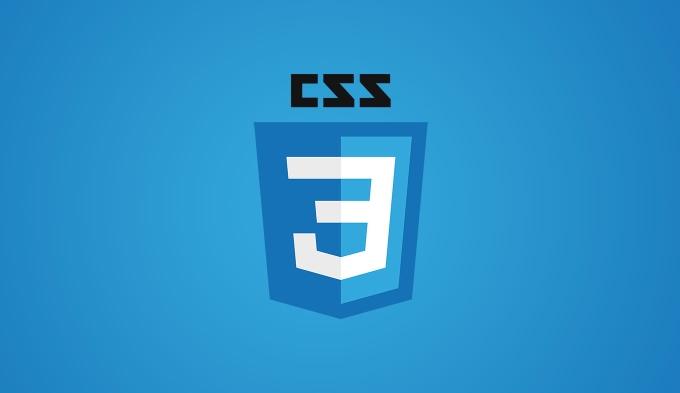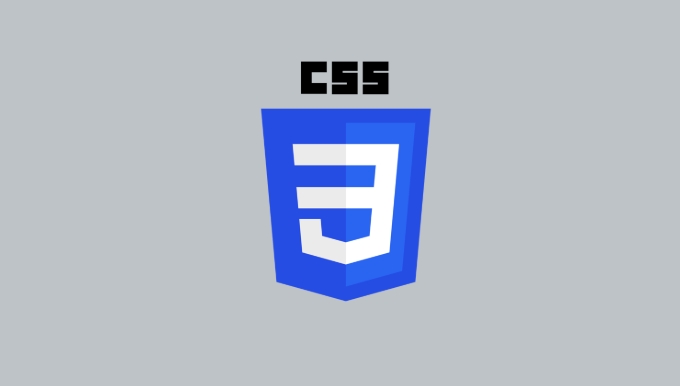How to implement CSS scroll-padding for better in-page navigation?
Aug 03, 2025 pm 12:45 PMUse scroll-padding to solve the problem of fixing the head occluding anchor points and improve the in-page navigation experience. 1. Apply scroll-padding-top to the html element, with the value equal to the fixed head height, such as html { scroll-padding-top: 80px; }; 2. Ensure that the scroll container is the root element, and html is usually the scroll container in modern browsers; 3. Adjust according to different devices, set a smaller padding value on the mobile side through media query; 4. Use responsive units such as rem, em or vh to adapt to different screens; 5. Avoid directly adding padding to the anchor element to avoid affecting the layout. This method is a pure CSS solution, compatible with modern mainstream browsers, which can effectively prevent content from being blocked after anchor points jump and improve user experience.

Using scroll-padding in CSS helps improve the user experience when navigating within a page—especially with fixed headers. When you use anchor links (like #section1 ), the browser scrolls to that element, but if you have a fixed header, it often overlaps the content, making it hard to read. That's where scroll-padding comes in.

What scroll-padding does
The scroll-padding property sets offset space around the scroll container's viewport. This ensures that when a link jumps to a section, the content isn't hidden behind a sticky or fixed header. It works on the scroll container—usually the body or html element.
How to apply scroll-padding
Start by applying scroll-padding-top to the html element (which is typically the scroll container in modern browsers):

html {
scroll-padding-top: 80px; /* Adjust to match your fixed header height */
}Now, when someone clicks an in-page link like:
<a href="#about">Go to About</a> ... <section id="about"> <h2>About Us</h2> <p>This content won't be hidden under the header.</p> </section>
The browser will automatically leave 80px of space at the top before aligning the target element, preventing overlap.

Key points to remember
- Apply it to the scrolling container : Usually
html, notbody. Most browsers use the root element as the scroll port. - Match the padding to your header height : If your fixed header is 60px tall, use
scroll-padding-top: 60px. - Use responsive units if needed : You can use
em,rem, or evenvhfor dynamic layouts. - Avoid setting padding directly on sections : While you could add
padding-topto each section, that can mess with layout and spacing.scroll-paddingis non-invasive.
Optional: Fine-tune for different breakpoints
If your header height changes on mobile, update scroll-padding-top accordingly:
html {
scroll-padding-top: 80px;
}
@media (max-width: 768px) {
html {
scroll-padding-top: 60px;
}
}This keeps navigation accurate across devices.
Browser support and fallbacks
scroll-padding is well-supported in all modern browsers (Chrome, Firefox, Safari, Edge). If you need to support older browsers, consider JavaScript-based scroll handlers or adding top padding/margin to target elements as a fallback.
Basically, scroll-padding is a clean, CSS-only fix for a common UX issue. Set it once on the html element, match it to your header height, and your anchor links will work smoothly.
The above is the detailed content of How to implement CSS scroll-padding for better in-page navigation?. For more information, please follow other related articles on the PHP Chinese website!

Hot AI Tools

Undress AI Tool
Undress images for free

Undresser.AI Undress
AI-powered app for creating realistic nude photos

AI Clothes Remover
Online AI tool for removing clothes from photos.

Clothoff.io
AI clothes remover

Video Face Swap
Swap faces in any video effortlessly with our completely free AI face swap tool!

Hot Article

Hot Tools

Notepad++7.3.1
Easy-to-use and free code editor

SublimeText3 Chinese version
Chinese version, very easy to use

Zend Studio 13.0.1
Powerful PHP integrated development environment

Dreamweaver CS6
Visual web development tools

SublimeText3 Mac version
God-level code editing software (SublimeText3)
 CSS tutorial for creating loading spinners and animations
Jul 07, 2025 am 12:07 AM
CSS tutorial for creating loading spinners and animations
Jul 07, 2025 am 12:07 AM
There are three ways to create a CSS loading rotator: 1. Use the basic rotator of borders to achieve simple animation through HTML and CSS; 2. Use a custom rotator of multiple points to achieve the jump effect through different delay times; 3. Add a rotator in the button and switch classes through JavaScript to display the loading status. Each approach emphasizes the importance of design details such as color, size, accessibility and performance optimization to enhance the user experience.
 Addressing CSS Browser Compatibility issues and prefixes
Jul 07, 2025 am 01:44 AM
Addressing CSS Browser Compatibility issues and prefixes
Jul 07, 2025 am 01:44 AM
To deal with CSS browser compatibility and prefix issues, you need to understand the differences in browser support and use vendor prefixes reasonably. 1. Understand common problems such as Flexbox and Grid support, position:sticky invalid, and animation performance is different; 2. Check CanIuse confirmation feature support status; 3. Correctly use -webkit-, -moz-, -ms-, -o- and other manufacturer prefixes; 4. It is recommended to use Autoprefixer to automatically add prefixes; 5. Install PostCSS and configure browserslist to specify the target browser; 6. Automatically handle compatibility during construction; 7. Modernizr detection features can be used for old projects; 8. No need to pursue consistency of all browsers,
 What is the difference between display: inline, display: block, and display: inline-block?
Jul 11, 2025 am 03:25 AM
What is the difference between display: inline, display: block, and display: inline-block?
Jul 11, 2025 am 03:25 AM
Themaindifferencesbetweendisplay:inline,block,andinline-blockinHTML/CSSarelayoutbehavior,spaceusage,andstylingcontrol.1.Inlineelementsflowwithtext,don’tstartonnewlines,ignorewidth/height,andonlyapplyhorizontalpadding/margins—idealforinlinetextstyling
 Creating custom shapes with css clip-path
Jul 09, 2025 am 01:29 AM
Creating custom shapes with css clip-path
Jul 09, 2025 am 01:29 AM
Use the clip-path attribute of CSS to crop elements into custom shapes, such as triangles, circular notches, polygons, etc., without relying on pictures or SVGs. Its advantages include: 1. Supports a variety of basic shapes such as circle, ellipse, polygon, etc.; 2. Responsive adjustment and adaptable to mobile terminals; 3. Easy to animation, and can be combined with hover or JavaScript to achieve dynamic effects; 4. It does not affect the layout flow, and only crops the display area. Common usages are such as circular clip-path:circle (50pxatcenter) and triangle clip-path:polygon (50%0%, 100 0%, 0 0%). Notice
 Styling visited links differently with CSS
Jul 11, 2025 am 03:26 AM
Styling visited links differently with CSS
Jul 11, 2025 am 03:26 AM
Setting the style of links you have visited can improve the user experience, especially in content-intensive websites to help users navigate better. 1. Use CSS's: visited pseudo-class to define the style of the visited link, such as color changes; 2. Note that the browser only allows modification of some attributes due to privacy restrictions; 3. The color selection should be coordinated with the overall style to avoid abruptness; 4. The mobile terminal may not display this effect, and it is recommended to combine it with other visual prompts such as icon auxiliary logos.
 How to create responsive images using CSS?
Jul 15, 2025 am 01:10 AM
How to create responsive images using CSS?
Jul 15, 2025 am 01:10 AM
To create responsive images using CSS, it can be mainly achieved through the following methods: 1. Use max-width:100% and height:auto to allow the image to adapt to the container width while maintaining the proportion; 2. Use HTML's srcset and sizes attributes to intelligently load the image sources adapted to different screens; 3. Use object-fit and object-position to control image cropping and focus display. Together, these methods ensure that the images are presented clearly and beautifully on different devices.
 Demystifying CSS Units: px, em, rem, vw, vh comparisons
Jul 08, 2025 am 02:16 AM
Demystifying CSS Units: px, em, rem, vw, vh comparisons
Jul 08, 2025 am 02:16 AM
The choice of CSS units depends on design requirements and responsive requirements. 1.px is used for fixed size, suitable for precise control but lack of elasticity; 2.em is a relative unit, which is easily caused by the influence of the parent element, while rem is more stable based on the root element and is suitable for global scaling; 3.vw/vh is based on the viewport size, suitable for responsive design, but attention should be paid to the performance under extreme screens; 4. When choosing, it should be determined based on whether responsive adjustments, element hierarchy relationships and viewport dependence. Reasonable use can improve layout flexibility and maintenance.
 What are common CSS browser inconsistencies?
Jul 26, 2025 am 07:04 AM
What are common CSS browser inconsistencies?
Jul 26, 2025 am 07:04 AM
Different browsers have differences in CSS parsing, resulting in inconsistent display effects, mainly including the default style difference, box model calculation method, Flexbox and Grid layout support level, and inconsistent behavior of certain CSS attributes. 1. The default style processing is inconsistent. The solution is to use CSSReset or Normalize.css to unify the initial style; 2. The box model calculation method of the old version of IE is different. It is recommended to use box-sizing:border-box in a unified manner; 3. Flexbox and Grid perform differently in edge cases or in old versions. More tests and use Autoprefixer; 4. Some CSS attribute behaviors are inconsistent. CanIuse must be consulted and downgraded.






